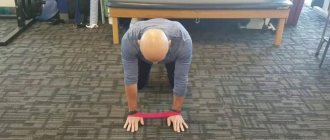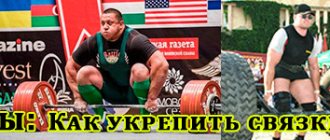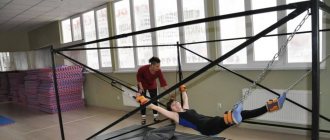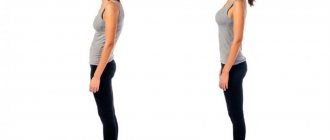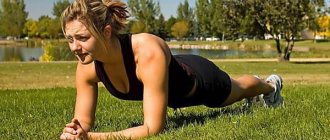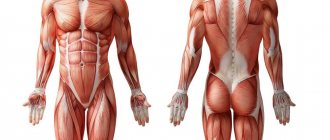Share:
Warming ointments are used for local treatment, most often for the purpose of pain relief for various diseases of the joints, muscles, ligaments, tendons and other parts of the musculoskeletal system. Such drugs are good at relieving swelling during inflammation, reducing the intensity of pain, and activating blood circulation in the affected area.
They can also be used for mechanical damage, for example, bruises, but are prescribed, as a rule, when the injury is already healing. Also, some “experts” recommend using warming ointments and creams to combat cellulite and reduce fat deposits in problem areas, but such methods are not scientifically proven.
Operating principle
The components of ointments do not penetrate deeply into the skin, the active substances trigger a number of processes on its surface that help relieve swelling, inflammation, etc. Blood flows more actively to the area where the balm or cream is applied, which is why everyone feels the familiar warmth. Due to increased blood circulation, metabolic processes improve, penetration of necessary substances and oxygen into cells increases.
In addition, the active substances of warming external agents act on pain receptors, blocking the passage of a nerve impulse. With this, an analgesic effect is achieved, soft tissues relax, and discomfort goes away.
It is believed that due to increased blood circulation, these ointments are also effective in combating excess fat and the appearance of the so-called “orange peel”. However, the processes that occur during the development of cellulite affect deeper layers of tissue into which the components of ointments and creams do not penetrate. At the same time, activation of blood circulation can indeed have some effect if you combine their use with the necessary physical activity.
Mechanisms of muscle pain
Muscles consist of protein (80%), which during strength training breaks down into amino acids that nourish other organs. During exercise, protein is processed ahead of time and the integrity of muscle tissue is disrupted. This process is called catabolism. At the same time, pain and fatigue appear, which warns of the need for rest. It is during rest that muscles grow.
This is how myofibrillar muscle hypertrophy occurs, which causes pain. Sliding of contractile proteins (myosin and actin) appears inside the muscles, which causes contraction and mobility of the muscle ligaments, making them stronger.
Types and composition
Products with a warming effect can be of synthetic or plant origin. The difference is that the former, as a rule, contain no more than two or three active components. These substances are added in fairly large concentrations and selected in such a way as to complement and enhance each other’s effects. Ointments of plant origin contain several (sometimes up to 20) components. They are present in small concentrations, and their effect is achieved through a combination of weakly expressed actions of each.
The main components of warming ointments are:
- nonsteroidal anti-inflammatory drugs (ibuprofen, diclofenac, nimesulide);
- anti-inflammatory drug place of application dimexide or dimethyl sulfoxide;
- alkaloid capsaicin (found in hot peppers);
- bee or snake venom;
- terpenes and terpenoids (camphor, turpentine);
- plant extracts.
Chondroprotectors should be included in a separate group, i.e. preparations for the treatment of joints and bones. They are:
- First generation: preparations of natural origin based on animal or plant cartilage extracts.
- Second generation: monopreparations that contain one of the following substances - glucosamine, chondroitin sulfate or purified hyaluronic acid.
- Third generation: combined action products, for example, glucosamine with chondroitin sulfate, sometimes other components are added.
It should be noted that clinical studies of chondroprotectors have shown that they are effective in protecting cartilage, but are practically useless for restoring it.
Preventive actions
Chondroprotective drugs containing collagen are recommended as preventive measures to prevent muscle strain. They enable joints and ligaments to function fully. The use of warming ointments during active training is the best prevention of sprains. They will make the muscles more pliable by activating blood circulation and heat exchange in the tissues.
Prevention, timely diagnosis and treatment of sprains are the key to muscle health and joint mobility.
What tools do you use? Share in the comments.
Indications
Doctors prescribe warming ointments for:
- joint inflammation;
- arthrosis;
- osteochondrosis;
- lumbago;
- radiculitis;
- intervertebral hernias;
- intercostal neuralgia;
- other rheumatic diseases;
- joint pain as a reaction to hypothermia.
Athletes use these ointments to prepare their muscles for intense training. Thanks to the action of the active components, muscle tissue warms up before exercise, and, as a result, is less damaged, which prevents stretching and injury. Products of this type are very helpful in relieving fatigue and tension from muscles after training.
Warming ointments are also prescribed for various mechanical damage to the musculoskeletal system (dislocations, bruises, tears and ruptures of ligaments). However, these remedies should not be used immediately after injury.
First of all, for an anesthetic effect and relief of inflammation, it is recommended to use ointments with a cooling effect, for example, with menthol. This relieves pain. In addition, you can apply a cold compress to the damaged area. Such measures reduce the area of inflammation, relieve tissue swelling, and have an analgesic effect. After a few days, the doctor will often prescribe warming ointments to further treat the injury.
Problem areas
The most traumatic are the large joints:
- Knee;
- Ankle;
- Elbow;
- Hip;
- Brachial.
Article on the topic: ointment for pain in the joints of the knees.
This is due to the greatest load on these ligaments and muscles. In addition to athletes, the risk group includes children with active physical activity and elderly people whose gait becomes less confident with age. But other categories of citizens are not immune from this type of injury. Muscle strain can be “earned” through daily exercise.
Contraindications
It is not safe to use ointments with a warming effect if a person suffers from intolerance to the components of the product or allergic reactions. The active substances of these drugs have a strong effect on the skin, so they can provoke quite intense negative reactions.
It is not recommended to use warming ointments for people with thin and sensitive skin. Application may cause irritation, redness, discomfort and pain. The reaction can be very severe, even causing a burn.
These ointments cannot be used for arthritis that has an infectious etiology or occurs with the addition of an infection. With such pathologies, the local temperature rises, and the use of the drug will only intensify this reaction. At high temperatures, some infectious agents will multiply even faster, which will aggravate inflammation and can lead to the development of a purulent process.
Do not apply ointments to damaged skin if there are wounds, scratches, or other damage. In this case, the active components will provoke increased pain.
It is not recommended to use warming ointments for people suffering from skin pathologies manifested in the form of pustules or other formations and rashes on the skin.
What restrictions do medications have?
In an “interesting situation,” it is prohibited to apply warming creams, especially if the medication contains poisons. In addition, such medications are contraindicated in children under twelve years of age and women during lactation. The list of restrictions also includes the following conditions:
Possible side effects
The most common adverse reactions when using external agents are rash, redness and itching, caused by an allergy to the components of the drug. If negative skin reactions are observed after application, you should immediately rinse off the remaining product with water and then treat the skin with vegetable oil.
If the instructions for use are not followed, more pronounced side effects may occur: severe allergic reactions, dizziness, weakness.
Treatment of muscle pain
To treat muscle pain, the following recommendations should be applied:
- Medicines. You can use painkillers (tablets, ointments, patches, gels). It is recommended to consult a specialist before using any pharmaceutical drugs.
- Light exercises. Improve blood flow in muscles, providing them with oxygen. At the same time, the lactic acid content decreases.
- Massage. Improves blood flow and muscle nutrition. Relieves tension and reduces pain.
- Hot bath (sauna). High temperatures improve blood flow and reduce lactic acid levels.
- Healthy diet. You need to include more fruits, vegetables and greens in your diet. The antioxidants they contain fight radicals.
The best products with a warming effect
In the ranking of warming ointments used by athletes, the first positions are occupied by the following drugs:
Nicoflex
A combined product with a local irritant and analgesic effect, contains capsaicin, as well as compounds that reduce inflammation and swelling of tissues, does not burn, does not cause discomfort.
Capsicam
Contains dimethyl sulfoxide, camphor and gum turpentine, has an anesthetic, vasodilating, irritating effect.
Finalgon
It contains two active substances: nonivamide (an analogue of capsaicin, obtained artificially) and nicoboxil (enhances the effect of nonivamide), the product has a vasodilating effect, stimulates skin receptors, thereby maintaining a long-lasting feeling of warmth.
Ben gay
Anti-inflammatory gel, contains methyl salicylate and menthol, relieves muscle pain well, helps overcome fatigue after intense training.
Apizartron
A medicinal ointment based on bee venom also contains methyl salicylate, relieves inflammation, reduces the intensity of pain, but has a sharp, memorable and rather unpleasant odor.
Viprosal
The product contains several active components at once (viper venom, camphor, turpentine, salicylic acid), has a local irritating effect, provides good pain relief, dilates blood vessels, which improves nutrition of the affected tissues.
Other means
Also considered good warming ointments are:
- Bystrumgel, Fastum gel, Valusal, Ketonal, Ketoprofen Vramed - all drugs contain ketoprofen, non-steroidal anti-inflammatory drugs. Prescribed for joint and back pain, inflammation and swelling of soft tissues.
- Voltaren Emulgel, Diclovit, Diclofenac - all products contain the main active ingredient diclofenac. It also belongs to the class of NSAIDs and has pronounced analgesic, anti-inflammatory and antipyretic effects.
- Menovazin - belongs to the group of local anesthetics in combinations. There are three main active ingredients: benzocaine, procaine racementol.
- Troxevasin, Troxerutin Vramed - the main substance of these ointments is troxerutin. Belongs to the pharmacological group of angioprotectors and microcirculation correctors (i.e., drugs that increase blood flow in small vessels and capillaries, reduce their fragility and fragility, improve blood fluidity).;
- Espol – contains extract of capsicum fruits. Belongs to the group of locally irritating agents of plant origin.
- Efkamon balm with a warming effect - contains many components, including menthol, camphor, methyl salicylate, eucalyptus, mustard and clove oils, tincture of capsicum, synthetic thymol, hydrochloride, etc. It has a local irritating effect.
- Sophia cream – contains bee venom.
- Venoruton-gel is an angioprotective agent that contains rutoside.
- Dolobene, Traumeel S - contains three main components: sodium heparin, dexpanthenol and dimethyl sulfoxide. They have anti-inflammatory, decongestant and local analgesic effects.
The most effective homeopathic remedies:
- cream balm Zhivokost;
- Traumeel S;
- Zeel T (Target T);
- Sabelnik balm;
- gel-balm Comfrey.
What are the benefits of chondroprotectors?
Chondroprotectors are special agents that are used to restore cartilage tissue damaged due to arthrosis of the knee joints. As cartilage wears down and breaks down over time, the bones begin to rub against each other, causing severe pain to the person. The limb is limited in movement. To restore cartilage tissue, components such as chondroitin, glucosamine and collagen are needed. They are the ones contained in the presented group of drugs.
These substances have a strong effect on the exchange of phosphorus and calcium in the body. Thanks to this, the progression of cartilage tissue destruction slows down. Chondroprotectors are quite well accepted by the body and practically do not cause unwanted reactions.
Article on the topic of ointments for joints: Chondrocream.
The following drugs are used to restore cartilage tissue:
- Chondroxide.
- Chondroitin.
- Artrin.
For crunching and pain in the knee joint, which indicate the development of gonarthrosis, chondroprotectors are the main drugs used in therapy.
Some folk recipes for preparing ointment for knee pain:
- Turnip based. First you need to select an unspoiled turnip, peel it and grind it to a pulp. After this, 100 g of honey and 20 g of vodka are added to it. The composition must be mixed well. Apply the product to the affected area several times a day.
- Ointment made from vinegar and eggs. To prepare the product you will need a chicken egg with its shell and vinegar essence. To begin with, the egg should be placed in a glass vessel. After this, the essence is poured in, which should cover the egg. The vessel should be placed in a dark nightstand for 5 days. During this time, the shell will completely dissolve, after which 200 ml of sunflower oil is added to the mixture. The mixture is exposed to the sun. You should also keep it there for about 5 days. After this, the product is ready for use. It must be rubbed in with light massage movements; after rubbing, the affected joint is wrapped in a warm scarf.
- If a person has problems with flexion or extension of the knee joint, and there is also pain in it, then this ointment will come in handy: glycerin, iodine, alcohol and honey are mixed in equal proportions, after which the composition should infuse for about several hours. Next, it is rubbed around the affected joint.
Good reviews can also be heard about Dikul balms. They are used to treat gout, osteoarthritis and osteochondrosis. Dr. Dikul's ointment has a pronounced analgesic and anti-inflammatory effect.
Whatever the cause of pain in the knee joint: training, injury or disease, treatment should be prescribed by a doctor.
Use of warming ointments
Warming ointments must be used with caution, taking into account the possible consequences. If we are talking about the treatment of diseases of the musculoskeletal system or injuries, then the prescription of all medications, including those for external use, is carried out by a doctor after examination and examination. Independent and uncontrolled use can lead to aggravation of the pathological process.
For treatment, ointments are used in courses, the duration of which is also determined by the doctor. As a rule, the remedy is prescribed for 1-2 weeks, until symptoms completely disappear and cure. It is applied to the affected area 2-3 times a day. You can do a light sports massage to enhance the effect.
Warming creams should not be applied under tight, compressive bandages, since prolonged exposure to the skin without access to air will cause a chemical burn. For better heating, it is permissible to briefly cover the treated areas of the skin with a fabric that allows air to pass through well.
Ointments with a warming effect can be applied exclusively to the skin, and there should be no damage to it. Contact with mucous membranes is very painful and can adversely affect their condition. If this happens by accident, you should immediately rinse off the product with water.
All external ointments have a symptomatic effect: relieve pain, reduce the external manifestations of inflammation. However, they do not in any way affect the course of the pathological process and do not eliminate the causes of the disease.
First aid
The outcome of treatment depends on how timely and correctly first aid is provided to the victim. The main task is to relieve pain, reduce swelling and prevent inflammation from developing. Ointment for sprains will do the job perfectly. The main condition is that you cannot start treatment on your own. The choice of ointments is large and they have different effects. The examination and the doctor will tell you which will help in a particular case. Improper treatment can lead to joint disease. A complete rupture of the ligaments is especially dangerous. In this case, surgical intervention is necessary.
At home, when it is not possible to immediately seek medical help, you can use the following remedies to relieve pain:
- Mix one egg white, 100 grams of grated laundry soap and a little water until smooth. Moisten a piece of gauze generously in the resulting mixture and apply it to the affected area. Helps well with ankle injuries.
- Chop the onion, mix it with one tablespoon of sugar and apply the resulting paste to the affected area. Place polyethylene on top and secure. Can be used for stretched arm muscles and foot injuries.
But the very first thing that needs to be done is to provide rest to the victim, to elevate the affected limb if it is an ankle injury. In case of injury to the arm or shoulder, it is necessary to immobilize the limb without moving. Then apply ice to the injured area through a towel. You can take an analgesic tablet and apply a fixing bandage.


